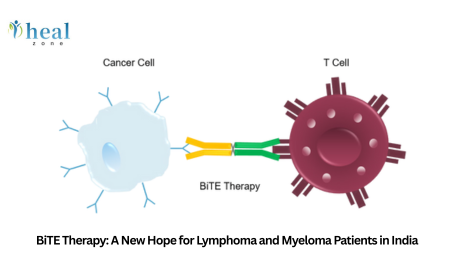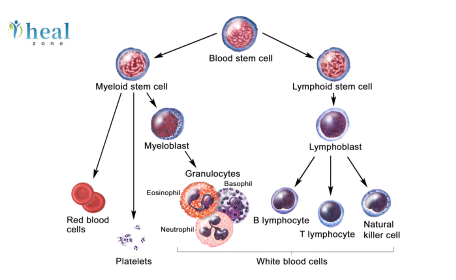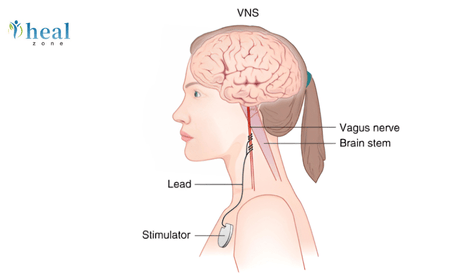What is Abdominal Hysterectomy, and how much does it cost in India?
An Abdominal Hysterectomy is a surgical procedure where the uterus is removed through an incision in the lower abdomen. It is often recommended to treat gynecologic conditions such as uterine fibroids, chronic pelvic pain, endometriosis, abnormal bleeding, or cancer. The surgery can be life-enhancing — or even lifesaving — for women suffering from serious uterine disorders.
India has become a top destination for international patients seeking this surgery due to its:
- Affordable treatment packages
- Experienced gynecologic surgeons
- World-class infrastructure with low infection rates
What is Abdominal Hysterectomy, and what conditions does it treat?
An Abdominal Hysterectomy is a major gynecological operation in which the uterus (and sometimes surrounding structures) is surgically removed through an incision made in the lower abdominal wall. This procedure may involve removal of:
- The uterus alone (simple hysterectomy)
- The uterus and cervix (total hysterectomy)
- The uterus, cervix, fallopian tubes, and ovaries (radical hysterectomy)
It is primarily used when less invasive methods are not possible or when the condition being treated is severe.
Common medical conditions treated:
- Uterine fibroids (non-cancerous growths)
- Endometriosis with severe pelvic pain
- Uterine or cervical cancer
- Chronic abnormal uterine bleeding
- Adenomyosis
- Uterine prolapse
- Postpartum complications (in rare emergency cases)
This surgery is typically recommended after conservative treatments have failed or when malignancy is involved.
What are the types of hysterectomy procedures?
There are different types of hysterectomy surgeries, depending on how much of the reproductive system needs to be removed and the route of access.
Types Based on What Is Removed:
|
Type |
What’s Removed |
|
Total Hysterectomy |
Uterus and cervix |
|
Subtotal (Partial) Hysterectomy |
Uterus only; cervix left intact |
|
Radical Hysterectomy |
Uterus, cervix, part of the vagina, and lymph nodes (for cancer cases) |
|
Hysterectomy with BSO |
Uterus + Bilateral Salpingo-Oophorectomy (fallopian tubes and ovaries) |
Types Based on Surgical Approach:
|
Approach |
Description |
|
Abdominal Hysterectomy |
Incision in lower abdomen to remove uterus — ideal for large fibroids or cancer |
|
Vaginal Hysterectomy |
Uterus removed through vaginal canal — less invasive, but not always suitable |
|
Laparoscopic Hysterectomy |
Minimally invasive; small abdominal incisions using a camera and tools |
|
Robotic-Assisted Hysterectomy |
Advanced version of laparoscopic surgery; more precision, higher cost |
Abdominal hysterectomy remains the most preferred route for large uterine tumors, suspected malignancy, or when a complete pelvic evaluation is needed.
When is Abdominal Hysterectomy necessary?
Abdominal Hysterectomy is typically recommended when:
- The uterus is enlarged significantly due to fibroids or other masses
- There is a suspicion or diagnosis of cancer
- Other surgical routes (vaginal or laparoscopic) are not feasible
- There is extensive pelvic disease, adhesions, or prior surgeries
- Emergency removal of the uterus is required (e.g., life-threatening bleeding)
Key Medical Indications:
1. Fibroids: Especially when large or causing heavy bleeding
2. Gynecologic Cancers: Uterine, cervical, or ovarian cancer
3. Endometriosis: When pain and symptoms persist despite other treatments
4. Adenomyosis: Abnormal thickening of the uterus causing pain and bleeding
5. Pelvic Inflammatory Disease (PID): In severe or chronic cases
6. Prolapsed Uterus: Uterus falls into or beyond the vaginal canal
Doctors only advise hysterectomy when preserving the uterus is no longer safe or practical.
What diagnostic tests are required before surgery, and what is the cost in India?
Before undergoing an abdominal hysterectomy, a full medical evaluation is necessary to confirm the diagnosis, rule out contraindications, and assess overall fitness for surgery.
Essential Preoperative Tests:
|
Test |
Purpose |
Approx. Cost (USD) |
|
Pelvic Ultrasound / TVS |
Evaluate uterus size, fibroids, endometrial lining |
$30 – $60 |
|
Pap Smear |
Cervical cancer screening |
$20 – $30 |
|
Endometrial Biopsy (if needed) |
Rule out uterine cancer |
$40 – $70 |
|
CBC, LFT, KFT, Blood Group |
General health screening |
$30 – $50 |
|
Urine Analysis & Culture |
Detect UTI or pelvic infections |
$10 – $20 |
|
ECG / Chest X-ray |
Pre-surgical cardiac and pulmonary clearance |
$20 – $40 |
|
Coagulation Profile |
Ensure safe blood clotting |
$20 – $30 |
|
COVID-19 / Infectious Disease Screening |
Safety protocol before admission |
$10 – $20 |
Total Pre-Surgical Test Cost in India: $150 – $300
All preoperative investigations are done within 1–2 days in India, allowing for a swift transition to surgery scheduling. If cancer is suspected, additional imaging (MRI/CT) may be advised.
What is the standard treatment protocol for international patients in India?
International patients undergoing abdominal hysterectomy in India follow a streamlined, safe, and well-coordinated treatment protocol. Here is a typical process:
Step 1: Pre-arrival Consultation
- Initial medical history, reports, and ultrasound findings are shared via email or virtual consultation.
- Doctors assess eligibility and advise on the surgical approach (open/laparoscopic).
- A tentative treatment plan and cost estimate are provided for visa and planning.
Step 2: Admission and Pre-Surgery Evaluation
- On arrival, the patient undergoes a physical evaluation and the required preoperative tests (CBC, imaging, cardiac clearance).
- Gynecologist and anesthesiologist finalize the surgical plan based on updated reports.
- Consent forms and discussions about surgical risks and outcomes are completed.
Step 3: Surgery Day
- The procedure is performed under general or spinal anesthesia.
- Duration ranges from 60 to 120 minutes.
- Uterus (with or without other structures) is removed through an abdominal incision.
- Blood transfusions, if required, are arranged in advance.
Step 4: Hospital Stay
- Patients are monitored in post-op recovery, typically staying 3 to 5 days.
- Pain management, antibiotics, and early mobilization are started.
- Wound dressings and catheter care are handled by trained staff.
Step 5: Discharge and Post-Op Care
- Discharge with instructions on wound care, activity restrictions, and medication.
- Follow-up scheduled within 7–10 days.
- Online follow-ups continue after the patient returns home.
Healzone coordinates every step of the journey, from airport pickup to recovery lodging, ensuring a seamless experience for international patients.
What kind of devices, implants, or surgical tools are used?
Abdominal hysterectomy involves a range of standard and advanced surgical tools. The specific devices depend on whether it’s an open or laparoscopic approach.
Commonly Used Instruments:
- Scalpels and scissors: For precise tissue incision.
- Retractors: To hold abdominal layers and provide visibility.
- Electrosurgical devices (diathermy or cautery): For cutting and coagulating tissues.
- Suction devices: For maintaining a clean surgical field.
- Sutures and staplers: For closing blood vessels and incisions.
- Laparoscopic tower and ports (if minimally invasive): In cases where laparoscopy is used for visualization and access.
Suture Types:
- Absorbable sutures are generally used internally.
- Non-absorbable sutures or skin staples may be used for the external incision and later removed during follow-up.
Anesthesia & Monitoring:
- Multi-parameter monitors, infusion pumps, and oxygen therapy ensure safe intraoperative care.
Indian hospitals follow international protocols and use FDA/CE-approved instruments, ensuring global-standard outcomes.
Why should international patients choose India for this treatment?
India has emerged as a global healthcare hub for gynecological surgeries. Key reasons include:
- Affordability: Patients save up to 70–80% compared to the US or UK.
- No Wait Lists: Fast scheduling means reduced anxiety and quicker relief.
- Expert Surgeons: Indian gynecologic surgeons are globally trained and highly experienced.
- Modern Facilities: Advanced ORs, ICUs, and minimally invasive techniques available.
- English-Speaking Medical Staff: Easy communication with doctors and nurses.
- Cultural Sensitivity: Respect for privacy and female care preferences.
- Safe Travel Infrastructure: International airports, medical visa assistance, and recovery hotels.
India not only offers clinical excellence but also ensures that international patients are comfortable, informed, and supported at every step.
What is the recovery process and post-op care timeline?
Recovery after an abdominal hysterectomy typically involves rest, gradual mobility, and attentive follow-up care. Here’s what to expect during the post-operative phase:
Hospital Stay:
Most patients remain hospitalized for 3 to 5 days for pain control, wound monitoring, and early ambulation.
Initial Recovery (Week 1–2):
- Mild abdominal discomfort, fatigue, and bloating are common.
- Pain medications and antibiotics are prescribed.
- Walking is encouraged to prevent blood clots.
- The surgical wound must be kept dry and clean.
Home Recovery (Weeks 3–6):
- Patients must avoid lifting heavy objects, driving, and strenuous activity.
- Vaginal spotting may continue for a few days.
- A follow-up appointment is usually scheduled within 10 days for suture or staple removal.
- Full recovery takes 4 to 6 weeks.
Long-Term:
- Hormone therapy may be considered if ovaries are removed.
- Emotional support is important for patients adjusting to reproductive changes.
- Most women resume normal activities and work within 6–8 weeks, depending on their overall health
International patients are advised to stay in India for 10–14 days post-surgery for follow-up before flying back home. Healzone provides all necessary care coordination during this period.
How should international patients prepare for this treatment in India?
Proper preparation ensures a smooth surgical experience for international patients seeking abdominal hysterectomy in India.
Pre-Travel Checklist:
- Share recent medical records, including imaging, biopsy results, and treatment history.
- Obtain a valid Medical Visa (Healzone provides assistance).
- Book travel and accommodation close to the hospital with post-op support facilities.
- Arrange for a family member or companion, if possible.
- Carry all regular medications, including those for chronic conditions (diabetes, hypertension).
What to Expect On Arrival:
- Consultation with the gynecologist and anesthesiologist.
- Completion of blood tests, ECG, and imaging.
- Explanation of the surgical process and post-op care.
- Consent signing and medical clearance.
Packing Tips:
- Comfortable loose-fitting clothes.
- Sanitary hygiene products.
- Slip-on footwear for ease post-surgery.
- All identification, insurance, and medical documents.
Healzone assigns a dedicated care manager to assist international patients throughout their medical journey, from airport pickup to recovery.
What long-term care or lifestyle changes are needed post-treatment?
While abdominal hysterectomy provides permanent relief from many gynecological issues, certain long-term changes and care steps are essential:
1. Physical Well-being:
- Avoid intense physical exertion for the first 6–8 weeks.
- Regular light exercise after recovery helps prevent weight gain and improve circulation.
- Pelvic floor exercises may be recommended for those experiencing mild prolapse symptoms post-op.
2. Hormonal Management:
- If ovaries are removed (surgical menopause), hormone replacement therapy (HRT) may be needed.
- Symptoms like hot flashes, mood changes, and dryness can be managed effectively with medical guidance.
3. Sexual Health:
- Sexual activity can usually be resumed after 6 weeks, depending on healing.
- Lubricants or hormone therapy may be advised to manage dryness.
4. Emotional Adjustment:
- Some patients may feel sadness or mood shifts post-surgery.
- Counseling or peer support helps in managing emotional transitions.
- Many women report improved quality of life, better sleep, and relief from chronic pain or bleeding after surgery.
5. Nutrition & Lifestyle:
- High-fiber diet and hydration help with post-op bowel function.
- Calcium and vitamin D supplementation may be advised to prevent bone thinning.
Healzone ensures that international patients receive a detailed discharge guide and virtual follow-up to monitor long-term recovery, no matter their home country














